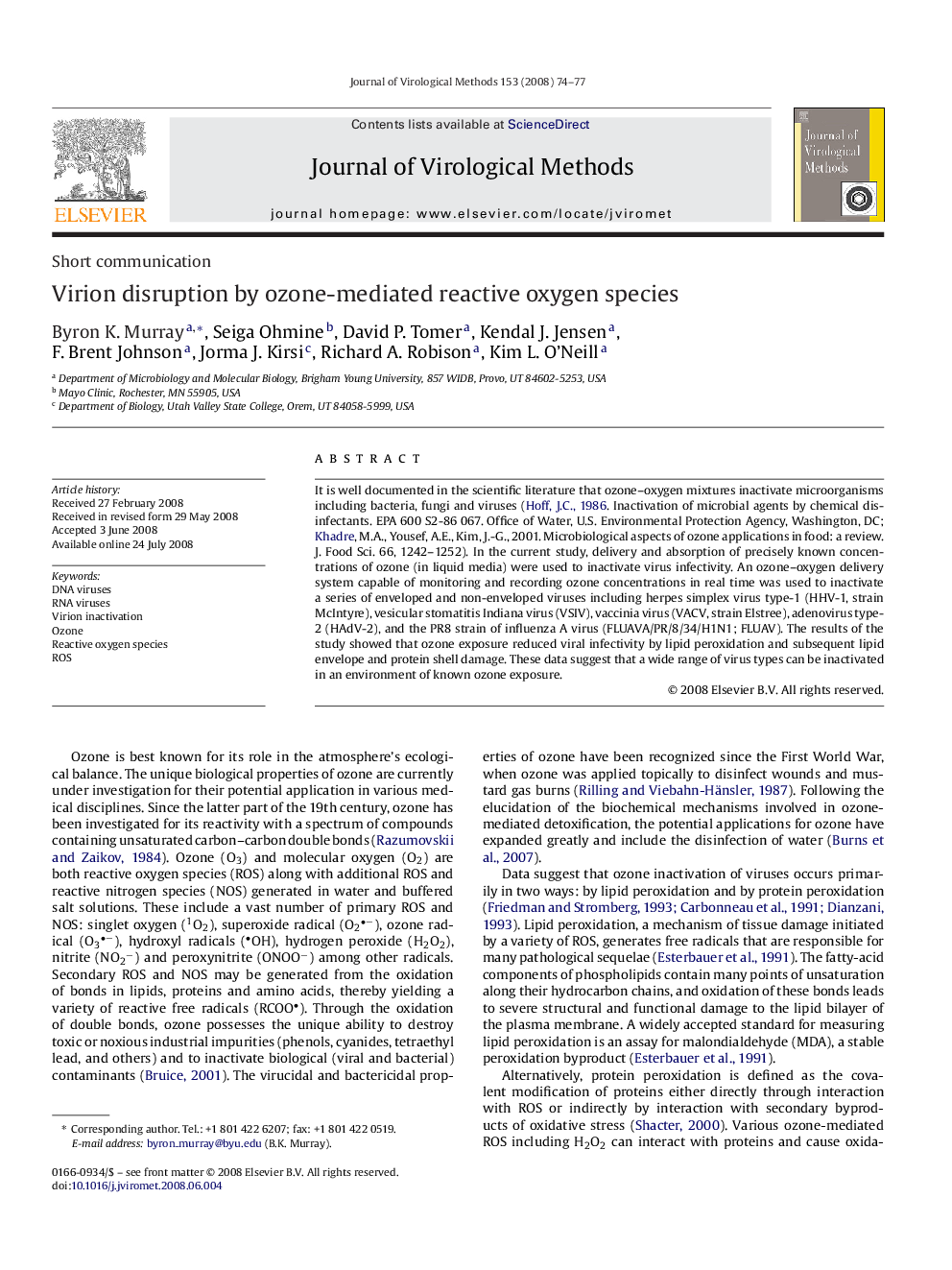| Article ID | Journal | Published Year | Pages | File Type |
|---|---|---|---|---|
| 3407709 | Journal of Virological Methods | 2008 | 4 Pages |
It is well documented in the scientific literature that ozone–oxygen mixtures inactivate microorganisms including bacteria, fungi and viruses (Hoff, J.C., 1986. Inactivation of microbial agents by chemical disinfectants. EPA 600 S2-86 067. Office of Water, U.S. Environmental Protection Agency, Washington, DC; Khadre, M.A., Yousef, A.E., Kim, J.-G., 2001. Microbiological aspects of ozone applications in food: a review. J. Food Sci. 66, 1242–1252). In the current study, delivery and absorption of precisely known concentrations of ozone (in liquid media) were used to inactivate virus infectivity. An ozone–oxygen delivery system capable of monitoring and recording ozone concentrations in real time was used to inactivate a series of enveloped and non-enveloped viruses including herpes simplex virus type-1 (HHV-1, strain McIntyre), vesicular stomatitis Indiana virus (VSIV), vaccinia virus (VACV, strain Elstree), adenovirus type-2 (HAdV-2), and the PR8 strain of influenza A virus (FLUAVA/PR/8/34/H1N1; FLUAV). The results of the study showed that ozone exposure reduced viral infectivity by lipid peroxidation and subsequent lipid envelope and protein shell damage. These data suggest that a wide range of virus types can be inactivated in an environment of known ozone exposure.
